5 NHL Players Who Won’t Sustain 1st Half Success

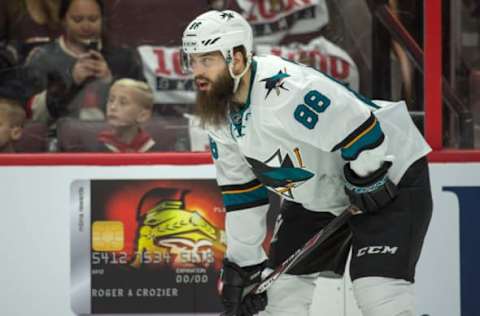
Several NHL players unexpectedly emerged in the 1st half of 2016-17 as they tend to do at the beginning of every season. Being able to sustain that success over the grind of an 82-game season is another story. Today, we’ll take a look at five players that may struggle to replicate their early success.
Former United States Secretary of Defense Donald Rumsfeld once gave the following, now famous, response when asked about the threat of terrorism: “There are known knowns. These are things we know that we know. There are known unknowns. That is to say, there are things that we know we don’t know. But there are also unknown unknowns. There are things we don’t know we don’t know.”
At first glance this may seem like a confusing concept; however, it makes a lot of sense and can be applied to many different areas of life. One of these areas should be the evaluation of hockey players.
How so?
To start, “known knowns” are the type players that don’t offer a lot of surprise. As fans, we know what they are going to produce and, for the most part, the quality of play that they bring to the ice. These are the Sidney Crosby’s and Marc-Edouard Vlasic’s of the world. Each year, it’s known that Crosby will be near the league lead in scoring, and it’s known that Vlasic will be one of the best shutdown defensemen in the game. Even Auston Matthews could be considered to have crossed that territory. He was a touted as a generational talent, and despite a small sample size, has been exactly that.
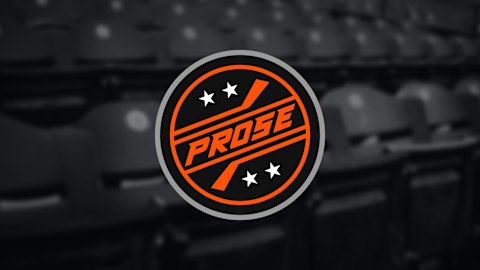
fits the bill for this sort of player.
That leaves us with “unknown unknowns”.
Rumsfeld defined unknown unknowns as ‘things we don’t know we don’t know’. This notion can be applied to hockey players regarding those that suddenly break out, putting forth a year that is significantly more productive than anticipated. Seemingly out of nowhere a player will find another level, a level that was previously unknown to fans, management, and potentially even the player himself. The reason for this breakout year can be anything from a spike in playing time to simply a greater sense of maturity. Unfortunately, often times these breakouts don’t last an entire season, and fall back down to their previous levels of production in the second half of the year. It’s difficult for a player to sustain success over a full 82 game schedule, especially when they’re playing at a level so far above their ability.
This article is dedicated to those ‘unknown unknowns’; specifically, those who will fall back down to earth during the final half of the season. Here are the top 5 NHL players that have experienced a first half significantly better than expected, and won’t be able to put up the same kind of production over the rest of the way.
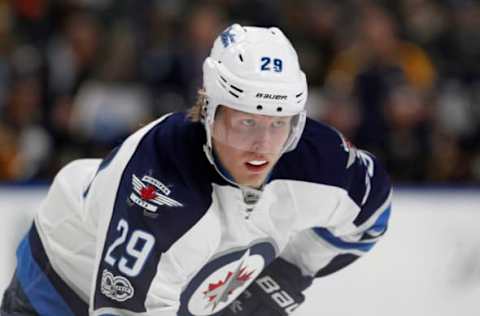
5. Patrik Laine, Right Wing, Winnipeg Jets
Patrik Laine’s inclusion on this list partially has to do with his current concussion injury. The Finnish sniper recently returned to the ice in practice, however, there is no saying how long it will be until he’s game ready. Jets forward Laine has been sidelined since January 7 after being hit by Jake McCabe.
Not all players come back from concussions the same. Some return and immediately reach the level of play they were at before the injury, whereas others take weeks to look like themselves. It’s impossible to predict how Laine will perform when he returns, which is reason enough as to why he won’t be as good in the second half of the season.
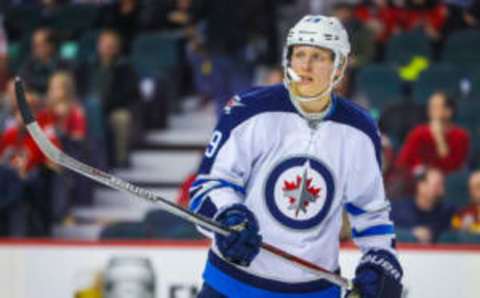
There’s no debate about Laine’s ability to put the puck in the next, but he has been somewhat of a streaky scorer in his first season. He has produced 4 multi-goal games, totaling 10 goals in those four games. Take those four games out of his season, and suddenly he’s only posted 11 goals and 27 points to date. Now, it’s this is pointless to discuss. Those four games count, and Laine has 21 goals and 37 points this season, which is very impressive for a rookie. What is of note is the streaky nature Laine has exhibited. All players are prone to streaks, specifically rookies. All it takes is a few bad bounces to find yourself in a drought. Without the bounces he got in those four games, Laine’s season looks much different.
Regardless of his second half, Laine’s future as a professional is very bright. He’s likely in line for multiple future Richard Trophies. Despite this, expectations should be tempered for the young phenom when he returns to gameplay.
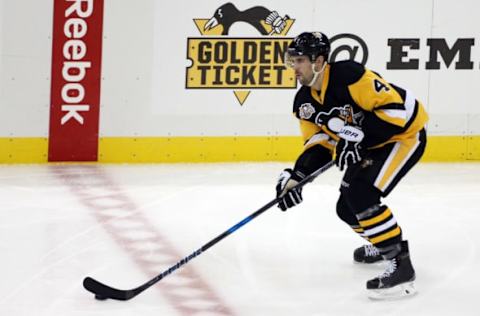
4. Justin Schultz, D, Pittsburgh Penguins
When Kris Letang went down with an injury, Justin Schultz capitalized on his chance to take Letang’s spot as the Penguins top defenseman.
Schultz is currently 4th in the NHL among defensemen with 30 points. In his career, he’s never posted more than 33 in a season. Playing on a power play with the likes of Phil Kessel, Sidney Crosby, and Evgeni Malkin will go a long way to providing those type of results.
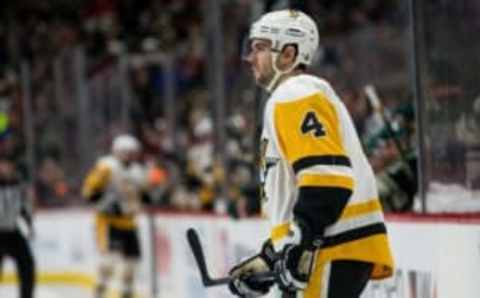
In the month of December alone, Schultz had 18 points in 15 games and was the highest scoring defenseman in the league. He’s back on a point per game pace in January (9 assists in 9 games), but 4 of those assists came in a wild 8-7 victory over Washington. Don’t except more of the same from Schultz going forward.
Letang has currently been listed as week to week by the Penguins. He has been in and out of the lineup all season due to various ailments, participating in only 30 games to date. When he returns, he will resume his duty as the point man on the Penguins power play. In addition, he eats a lot of minutes, which will cut into Schultz’s playing time. In the month of November, when Letang was healthy for the majority of Pittsburgh’s games, Schultz managed just 4 points in 14 games.
When Letang returns to the Penguins’ defense corps for good, it will likely spell the end of Schultz run as a top scoring D-man. Even if Letang is out for longer than expected, Schultz’s career trends would suggest that his current scoring pace won’t be sustained.
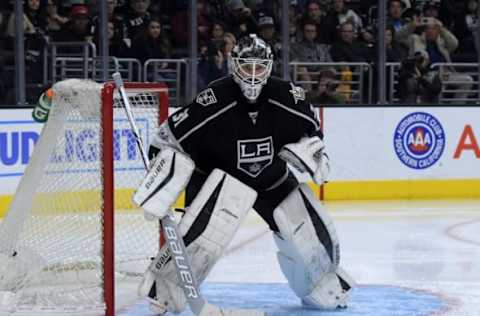
3. Peter Budaj, G, Los Angeles Kings
Before I provide reasoning as to why Budaj will have a rough second half, I’d like to acknowledge how great he’s been for Los Angeles this season. Many people wrote them off at the start of the year when Jonathan Quick went down. The team lost their first three games of the season, but rallied and currently hold the final playoff spot in the Western Conference. Budaj deserves a large amount of credit for the team’s success. His goals against average is 8th in the NHL (goalies with 10gp or more) at 2.14, and has started more games than any goalie not named Cam Talbot, Cam Ward, Martin Jones, or Tuukka Rask. He’s outperformed all expectations that the team had of him when he took over in net…
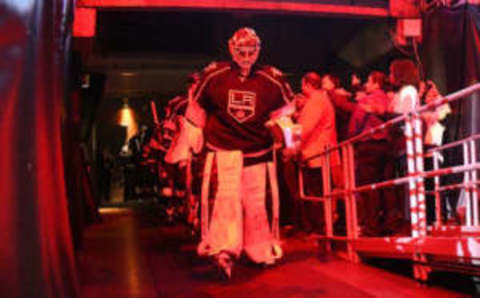
…Which is exactly why he’s in for a second half decline. The last time the 34-year-old started over 40 games was in 2010/11 for the Colorado Avalanche, when he put up a GAA of 3.20 and helped guide the team to the second-worst record in the NHL. In the five previous seasons that he played 30+ games, he never recorded a goals against average lower than 2.57. Throughout his career, when he’s had to play in a significant portion of his team’s games, the results haven’t been anything special. This is why his first 39 starts this season have been such an anomaly.
Fortunately for the Kings, Quick could be back as soon as a month’s time. All they need Budaj to do is leave them in a position where the playoffs are still within reach upon Quick’s return. As a team, the Kings have played a strong defensive game this year, but is remains to be seen if this will continue. Budaj has been the prime benefactor of this quality defending. He’s done a good job of holding down the fort for the Kings, but given his track record, an implosion seems imminent for Budaj.

2. Brent Burns, Defenseman, San Jose Sharks
Don’t get me wrong, I love Brent Burns. He never fails to impress me when I watch him play, he’s a monster on the ice and is a major reason the San Jose Sharks are as good as they are. There’s no doubt in my mind he’ll be in contention for the Norris Trophy at the end of the season. However, he won’t be able to continue at the pace he’s currently on.
Why?
More from Editorials
- The problem with another expansion franchise in the NHL
- Should the NHL make referees give postgame interviews?
- Why Carolina Hurricanes fans should be excited for the 2023-24 season
- Should The Seattle Kraken Consider Trading Shane Wright?
- Why any NHL team would be lucky to add Phil Kessel to their roster
I hate when people use the phrase ‘because it never happens’ in an argument, but I’m going to pull it out here. Since the 2000/01 season, only four defensemen have ever produced a full season at a point-per-game pace: Nicklas Lidstrom in 2005/06, Mike Green in 2008/09 and 2009/10, and Erik Karlsson last season. Only Mike Green in 08/09 had scored more points per game than Burns has this year, and he played in just 68 games which barely qualifies as a ‘full’ season. Historically, the type of season Brent Burns is having just doesn’t take place all that often, so it’s easy to project a drop off in production.
Now, there’s more reason than that to suggest Burns’ second half won’t match his first. He’s on pace for roughly 34 goals, a number which would shatter his previous career high of 27 by some margin. This is partially due to his shooting percentage. Burns has scored on 10.4% of his shots this year, a number which is over 3% higher than last season as well as above the league-wide average of 9.1%. Over his career, Burns has scored on 7.6% of his shots. Now, this may not sound like much, but if Burns would have scored last season at the rate he has this year, he would’ve produced about 10 more goals. Simply enough, Burns’ career trends have suggested that he won’t be able to continue at this pace, which would make his goal scoring numbers go down over the remainder of the campaign.
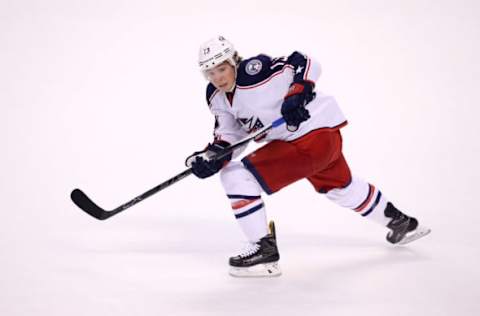
1. Cam Atkinson, Right Wing, Columbus Blue Jackets
More from Puck Prose
- Detroit Red Wings 2023 Rookie Camp Has Plenty of Ups and Downs
- This Columbus Blue Jackets rookie doesn’t want to be forgotten
- 2 trades the Boston Bruins must make to secure the Stanley Cup
- 3 reasons the Avalanche won’t win the Stanley Cup in 2024
- This is a big year for Alex Turcotte and the Los Angeles Kings
To be honest, I could pick a handful of Blue Jackets and put them on this list. Atkinson, Alex Wennberg, Nick Foligno, Sam Gagner – the majority of the team is playing over their head, which has caused many to question whether or not they will continue leading their division. Leading the charge is Atkinson, an undersized winger who has 45 points in 46 games this season. This, coming after not scoring more than 53 points in a full season in any of his first four seasons. There are a number of reasons why Atkinson’s production will slow over the rest of the season.
The majority of these reasons deal with that, as mentioned, the fact that the Blue Jackets are as a whole are playing so well. Atkinson has scored nearly half (19 of 45) points on the power play this season. The Blue Jackets currently have the best power play in the NHL, operating at a rate of 25.0%. Over the course of the team’s 16 game winning streak earlier this year, that number was even higher. Columbus had a bottom-10 power play last season, and will likely experience a drop in success with the man advantage over the last half of their season. Fewer power play goals will result in fewer points for Atkinson the rest of the way.
Next: NHL Mid-Season Grades: Atlantic Division
In addition, just like Burns his shooting percentage is very misleading. Atkinson has scored on 23 of 137 shots, which equals a ridiculous 16.8%. This pace is likely unsustainable.
The Blue Jackets experienced an excellent start to their season, and should see some regression in their final 36 games. Along with his team, Atkinson cool off from his hot start and won’t come close to remaining at a point-per-game pace.